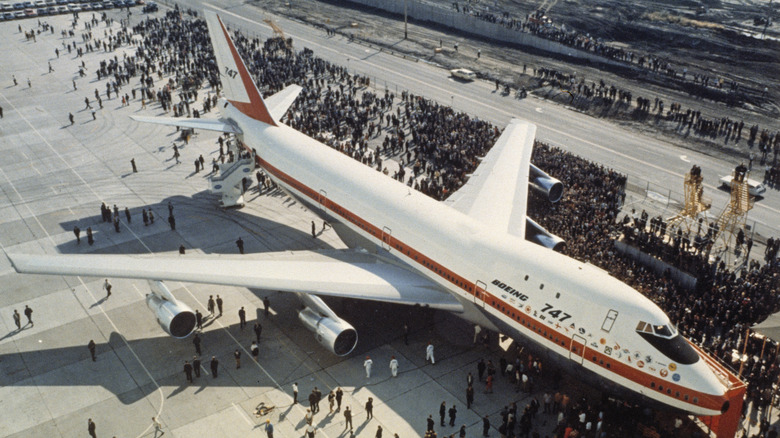A Cold War Secret in a Parisian Restaurant
In the late 1960s, the world was on edge. The Cold War was at its peak, and tensions between the United States and the Soviet Union were at an all-time high. Yet, amid this atmosphere of suspicion and rivalry, an unusual meeting took place in Paris. It wasn’t the kind of encounter you’d expect from a global superpower rivalry—it was more like something out of a James Bond film. Joe Sutter, the chief engineer of Boeing’s iconic 747, was seated across from a group of Soviet aeronautical engineers, not as adversaries but as potential collaborators.
This wasn’t just any meeting. It was a government-sanctioned exchange, orchestrated by the U.S. Department of State. The goal? To share technical information about aircraft design with one of America’s most formidable competitors. The location? A neutral Parisian restaurant, where the only things burning were the cigarettes and the tension in the air.
A Desperate Need for Titanium
The reason behind this unusual collaboration was rooted in desperation. At the time, Boeing was juggling two massive projects that threatened to bring the company to its knees. The first was the Boeing 747, a revolutionary project aimed at creating the largest passenger jet in history. The second was the Boeing 2707, a supersonic transport meant to compete with the Concorde and the Soviet Tu-144.
The 2707 required an advanced material: titanium. Its ability to withstand the intense heat generated by supersonic flight made it essential. However, Boeing lacked the expertise to fabricate titanium on such a large scale. The Soviets, on the other hand, had vast reserves of titanium and a well-established space program that gave them an edge in manufacturing the metal.
A Meeting of Minds
While the Soviets were struggling with their own version of a jumbo jet, they faced a design challenge that Boeing had already solved. Their initial designs for a large aircraft were conservative, but they couldn’t figure out why Boeing mounted its engines on pylons under the wings rather than on the rear fuselage. This question became the focus of their meeting in Paris.
The dinner began with a strategic intelligence operation. Boeing’s SST expert, Bob Withington, grilled the Soviet engineers on their titanium fabrication techniques. In return, the Soviets shared detailed knowledge about their processes. As the conversation progressed, Boeing’s team got exactly what they needed.
A Napkin Masterclass
Withington and his team were eager to learn, and the Soviets were more than willing to explain. What followed was an impromptu masterclass in aircraft design, drawn on cloth napkins and even the tablecloth itself. The lack of paper was a minor inconvenience, but both sides seemed to think it was too risky to bring notebooks into the discussion.
Sutter explained the advantages of the wing-mounted pylon design, emphasizing how it provided bending relief and made the engines safer and easier to maintain. By the end of the evening, the Soviet delegation carefully rolled up the inked linens, taking home a new perspective on aircraft design.
A Design Transformation
The impact of the meeting was immediate. The Ilyushin Il-86, the Soviets’ answer to the 747, underwent a dramatic redesign shortly after the meeting. It abandoned its rear-engine layout in favor of a four-engine underwing configuration—clearly inspired by the Boeing 747. While it wasn’t a direct copy, the fundamental design was a direct result of the knowledge exchanged in that Parisian restaurant.
However, the Il-86 ultimately failed due to inefficient and outdated engines. This showed that even with access to cutting-edge design principles, success still depended on a range of factors beyond just technical know-how.
A Legacy of Collaboration
Despite the political tensions of the Cold War, this meeting in Paris proved that even the fiercest rivals could find common ground. The exchange of ideas between Boeing and the Soviet engineers was a rare moment of cooperation in a period defined by division. It also highlighted the power of knowledge sharing, even in the most unlikely of settings.



